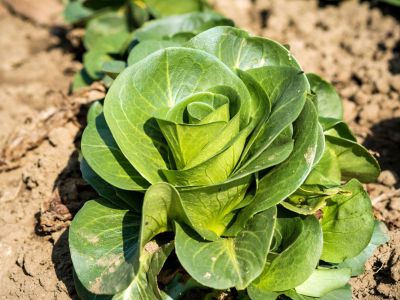Cool Weather Vegetables and Heat
Cool weather crops can take a day or two of extreme heat as long as their root system is kept moist. They basically shut down all non-essential functions and just hang in stasis. If temperatures stay hot for longer, however, cool season crops in summer heat can be lost. The longer the heatwave lasts, the greater the damage to the plants. As above, the plants first go into stasis, which means they reduce photosynthesis, don’t set flowers, or grow. Next, secondary systems start to fail. One of the most important of these is transpiration, which is sort of like a dog panting to cool its body temperature. Plants take up water from the soil to stay hydrated and cool, but they also expel some of that water which then evaporates, cooling the exterior leaves. When temperatures are hot for lengthy periods, transpiration slows, leading to heat stressed plants.
Cool Season Crop Protection
The slowing or loss of photosynthesis and transpiration can lead to death, so keeping vegetables cool during heat waves is of primary importance. The question is how can you protect cool weather vegetable from heat? The first thing, of course, is water, but water alone isn’t enough during the dog days of summer. As mentioned, cool weather vegetables and heat don’t mix, so what can be done? A combination of plant selection, mulch, and protective covering are a good start to keeping vegetables cool. When choosing your crops, opt for heat tolerant cool season varieties. Also plant taller, heat-loving plants like corn or amaranth nearby to help shade the more delicate cool season crops. Also, try growing baby veggies. These are harvested earlier than mature varieties and are less likely to hit a heat wave. Plants grown closely together shade soil, keep roots cool, and share the transpiration benefits. Planting closer together than normal does mean your soil needs to be rich in nutrients and you need to keep an eagle eye out for pests as well as harvest more often, but the benefit is keeping vegetables cool.
Other Ways to Protect Cool Season Crops in Summer
One of the easiest ways to protect cool weather vegetables from heat is by mulching. Mulching reduces the soil temperature by retaining moisture. To further enhance this effect, use light colored mulch to reduce radiant heat absorbed into the soil. Even laying white, floating row covers over crop beds will help to retain moisture and reduce temperatures around plants roots. Create afternoon shade to protect cool season crops in summer. Afternoon shade can be provided with a shade row cover or other materials or by using gates, trellises, potted plants, or hedges. Feed your plants to protect them from the ravages of heat. This might mean adding well-aged compost into the soil, using fish emulsion, or feeding with compost tea. Lastly, if you’re serious about protecting cool season plants in summer, you might think about sloping your beds or investing in a misting system. Sloping a bed does affect drainage, but it can also reduce the absorption of radiant heat, thereby lowering your soil temps somewhat.
